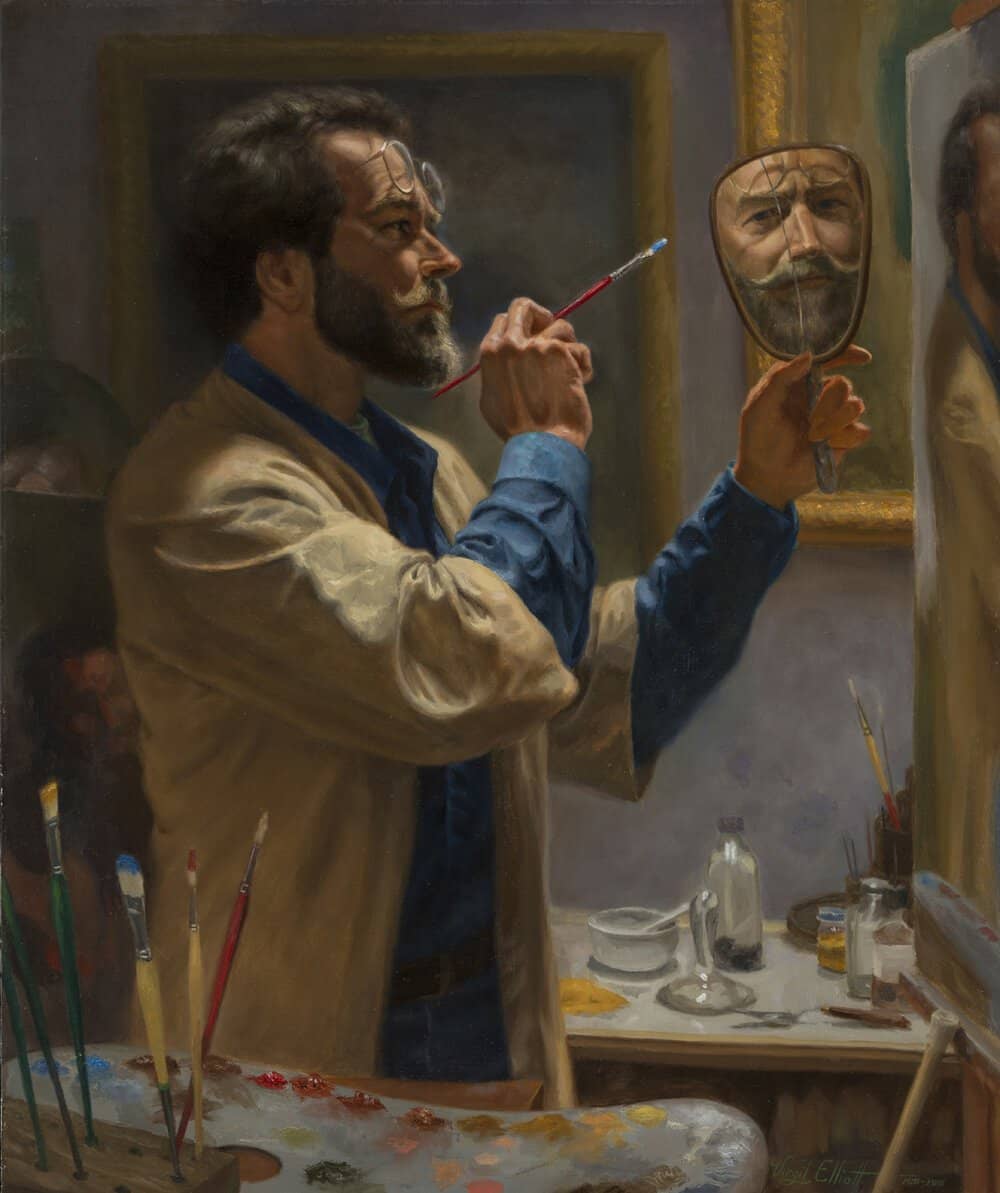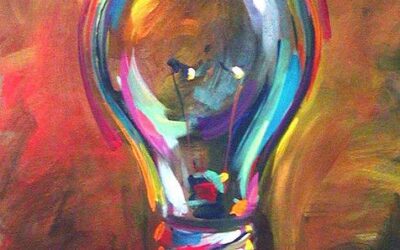What is the Artist Archetype?

The Creator/Artist archetype represents the human drive to create, innovate, and express oneself through various forms of art and craftsmanship. This archetype is driven by a deep desire to bring ideas and visions to life, often challenging the status quo and pushing the boundaries of what is possible [1]. The Creator/Artist seeks to inspire, provoke, and transform through their creative endeavors. This article explores the origins, characteristics, and significance of the Creator/Artist archetype, tracing its evolution from ancient times to the present day.
Explore all the Archetypes
The Creator/Artist Archetype in Parts-Based Therapies
In parts-based therapies like Internal Family Systems (IFS), Schema Therapy, and Voice Dialogue, the Creator/Artist archetype can be understood as a potential part or subpersonality within an individual’s internal system [2]. This part may manifest as an imaginative, expressive, or innovative presence that seeks to create and bring new ideas to life.
Internal Family Systems (IFS)
In IFS, the Creator/Artist part may serve as a source of inspiration, creativity, and self-expression. However, if the Creator/Artist part becomes extreme or polarized, it may lead to perfectionistic tendencies, a fear of failure, or a neglect of other important aspects of life [3].
Schema Therapy
In Schema Therapy, the Creator/Artist archetype may be associated with the “Happy Child” mode, which represents a state of joy, spontaneity, and creative freedom [4]. However, if the individual has experienced trauma related to self-expression or creativity, they may develop maladaptive schemas like “Emotional Deprivation” or “Defectiveness/Shame.”
Voice Dialogue
In Voice Dialogue, the Creator/Artist archetype may be viewed as a distinct subpersonality or “voice” that can be dialogued with to gain insight into the individual’s creative process and impulses [5]. Facilitating communication between the Creator/Artist voice and other voices can help create a more balanced and integrated approach to creativity.
The Creator/Artist’s Role in Mythology and Literature
The Creator/Artist archetype has been prominently featured in mythology and literature throughout history. Examples include:
- Prometheus, the Titan who created humans and gave them fire in Greek mythology [6]
- Pygmalion, the sculptor who fell in love with his own creation in Ovid’s Metamorphoses [7]
- Prospero, the magician and master of illusions in Shakespeare’s The Tempest [8]
These characters embody the Creator/Artist’s ability to bring forth new life, shape reality, and inspire others through their creations.
The Creator/Artist in Psychology and Personal Development
The Creator/Artist archetype plays a significant role in an individual’s psychological development and sense of self. A healthy expression of the Creator/Artist archetype can lead to a strong sense of identity, self-expression, and the ability to bring new ideas and visions to life [9].
However, an imbalanced or shadow expression of the Creator/Artist may manifest as perfectionism, a fear of criticism, or a tendency to neglect other important aspects of life in pursuit of creative goals [10]. Integrating the Creator/Artist archetype involves cultivating a balanced and sustainable approach to creativity and self-expression.
The Creator/Artist in Relationships and Careers
In relationships, the Creator/Artist archetype may manifest as a partner who values creativity, self-expression, and the pursuit of new ideas. However, the Creator/Artist must be mindful of balancing their creative pursuits with the needs and desires of their partner [11].
In careers, individuals with a strong Creator/Artist archetype may be drawn to fields such as art, music, writing, design, or entrepreneurship. They thrive in environments that allow for creative freedom, innovation, and the ability to bring new ideas to life [12].
The Creator’s Role in the Hero’s Journey
In the Hero’s Journey, the Creator archetype often appears as the hero themselves, as they must create new solutions and forge their own path [6]. The hero’s creative power is tested through trials and challenges, ultimately leading to personal transformation and the birth of a new reality.
The Role of the Creator in Prehistory and Ancient History
In prehistoric times, the Creator archetype was embodied by artisans, inventors, and visionaries who drove innovation and cultural evolution [7]. Ancient civilizations celebrated Creator deities like Ptah (Egypt), Vishvakarman (India), and Hephaestus (Greece), honoring the divine power of creation [8].
The Creator in Literature and Art
The Creator archetype has been a central figure in literature and art, from Pygmalion in Greek mythology to the struggling artist trope in modern works [9]. Visionaries like Leonardo da Vinci and Pablo Picasso exemplify the Creator’s drive to push boundaries and redefine art itself [10].
The Creator in Psychology and Personal Development
Psychologists like Abraham Maslow and Carl Rogers emphasized the importance of creativity for self-actualization and personal growth [11]. The Creator archetype encourages individuals to embrace their unique creative potential and find fulfillment through self-expression [12].
The Shadow Side of the Creator
The Creator’s shadow may manifest as an obsessive pursuit of perfection, a fear of failure, or an overly critical inner voice [13]. Integrating the Creator requires balancing vision with practicality and learning to embrace the creative process, not just the end product [14].
The Creator in Relationships, Careers, and Life
The Creator archetype influences various aspects of life, from personal relationships to career choices. Creator-oriented individuals may thrive in artistic, innovative, or entrepreneurial fields, but must also learn to balance their creative drive with other responsibilities [15].
Interpersonal Neurobiology and Somatic Experience
The Creator archetype shapes our somatic experience, influencing the emotions we tend to emphasize or avoid. Overidentifying with the Creator may lead to sensitivity towards praise or criticism, while neglecting this archetype may result in feelings of stagnation and disconnection from one’s creative potential [16].
Trauma and the Creator Archetype
Trauma related to the Creator archetype can manifest as creative blocks, self-doubt, or a fear of expressing oneself. Enmeshment with the Creator may lead to an overemphasis on productivity and achievement, while avoidance can stifle creative potential and self-expression [17].
The Creator in Politics and Religion
In politics, the Creator archetype drives innovation, inspiring leaders to develop new policies and systems. However, the shadow Creator may pursue change for its own sake, neglecting practical considerations [18]. In religion, the Creator is often associated with the divine power of creation, as seen in the Abrahamic God or the Hindu deity Brahma [19].
The Balanced Creator: Benefits and Opportunities
When balanced, the Creator archetype enables individuals to express their unique vision, solve problems creatively, and find deep fulfillment through the creative process. Embracing the Creator can lead to personal growth, innovation, and a greater sense of purpose [20].
The Creator in the Modern World
In today’s rapidly changing world, the Creator archetype is more relevant than ever. The modern Creator must navigate the challenges of technological disruption, environmental concerns, and the need for innovative solutions to complex global issues [21].
The Creator Archetype’s Role in the Evolution of Human Culture and Consciousness
The Creator archetype has been a driving force in the evolution of human culture and consciousness. By constantly pushing boundaries and bringing new ideas into existence, Creators have shaped the course of history and expanded the collective imagination [22].
The Creator Archetype in Posture and Somatic Experience
Those strongly identified with the Creator archetype may have a dynamic, expressive posture that reflects their inner passion and drive to bring ideas to life. They may experience a sense of flow and energetic alignment when engaged in creative pursuits. However, when the Creator is blocked or struggles with self-doubt, they may experience somatic symptoms such as tension headaches, neck and shoulder pain, or a sense of stagnation in the body.
Enneagram and MBTI Correlations with the Creator Archetype
Enneagram: Type 4 (The Individualist), Type 7 (The Enthusiast) MBTI: ENFP (Extraverted, Intuitive, Feeling, Perceiving), INFP (Introverted, Intuitive, Feeling, Perceiving)
The Creator Archetype in Screenwriting and Fiction Plotting
The Creator often plays the role of the visionary artist, the innovative scientist, or the enterprising entrepreneur in stories. They may be driven by a desire to bring something new and original into the world, often facing challenges such as creative blocks, self-doubt, or societal resistance to their ideas.
The Power of the Creator
The Creator archetype represents the transformative power of imagination and the human capacity to shape reality. By understanding and embracing the Creator within, we can tap into a boundless source of creative potential, contributing to the ongoing evolution of ourselves and the world around us [23].
Bibliography
- Myss, C. (2013). Archetypes: Who Are You? Hay House.
- Schwartz, R. C. (1995). Internal Family Systems Therapy. Guilford Press.
- Earley, J. (2009). Self-Therapy: A Step-By-Step Guide to Creating Wholeness and Healing Your Inner Child Using IFS. Pattern System Books.
- Young, J. E., Klosko, J. S., & Weishaar, M. E. (2006). Schema Therapy: A Practitioner’s Guide. Guilford Press.
- Stone, H., & Stone, S. (2011). Embracing Our Selves: The Voice Dialogue Manual. New World Library.
- Graves, R. (2017). The Greek Myths. Penguin Books.
- Ovid. (2010). Metamorphoses. Penguin Classics.
- Shakespeare, W. (2016). The Tempest. Penguin Classics.
- Pearson, C. S. (1991). Awakening the Heroes Within: Twelve Archetypes to Help Us Find Ourselves and Transform Our World. HarperSanFrancisco.
- Campbell, J. (2008). The Hero with a Thousand Faces. New World Library.
- Johnson, R. A. (1983). We: Understanding the Psychology of Romantic Love. HarperOne.
- Mark, M., & Pearson, C. S. (2001). The Hero and the Outlaw: Building Extraordinary Brands Through the Power of Archetypes. McGraw-Hill Education.
- Herman, J. L. (2015). Trauma and Recovery: The Aftermath of Violence–From Domestic Abuse to Political Terror. Basic Books.
- Van der Kolk, B. (2015). The Body Keeps the Score: Brain, Mind, and Body in the Healing of Trauma. Penguin Books.
- Cameron, J. (2016). The Artist’s Way: A Spiritual Path to Higher Creativity. TarcherPerigee.


























0 Comments